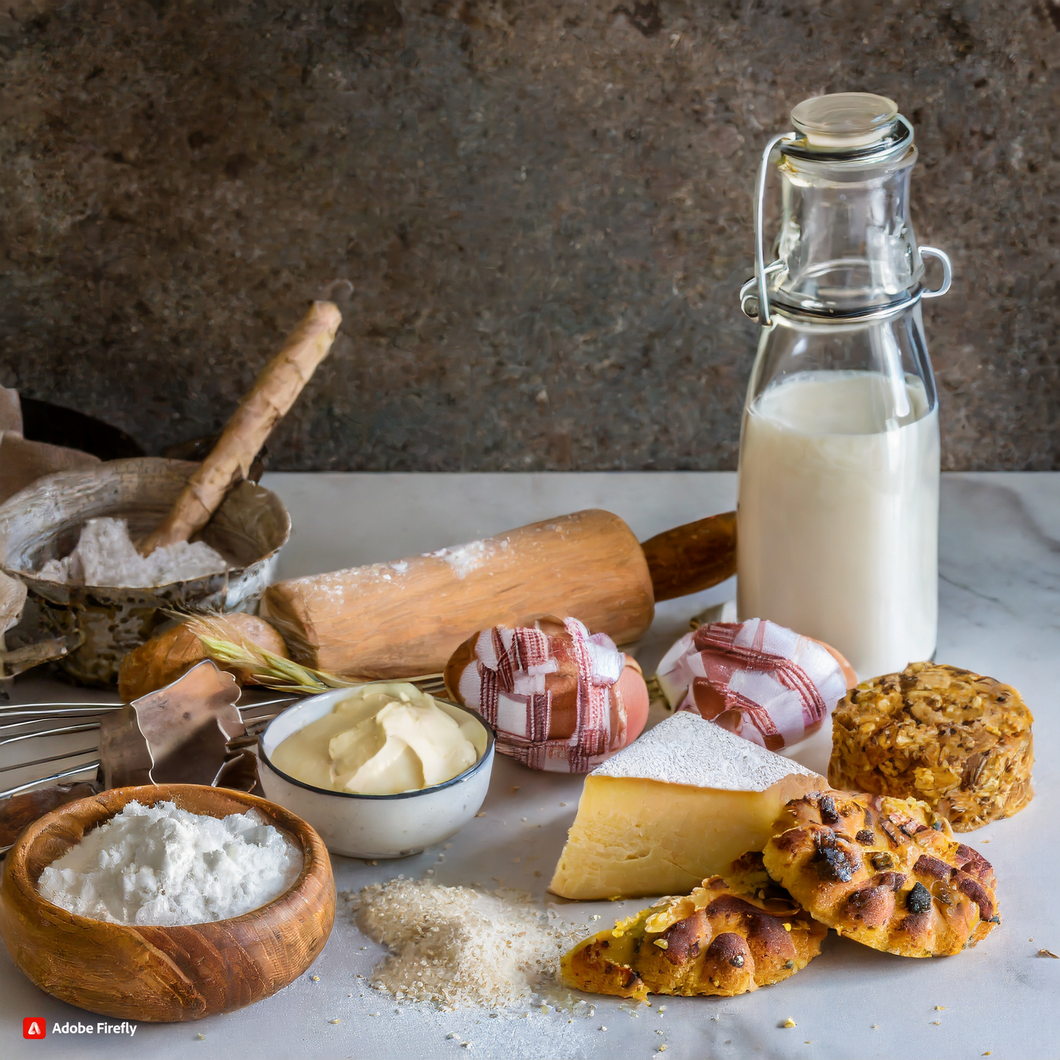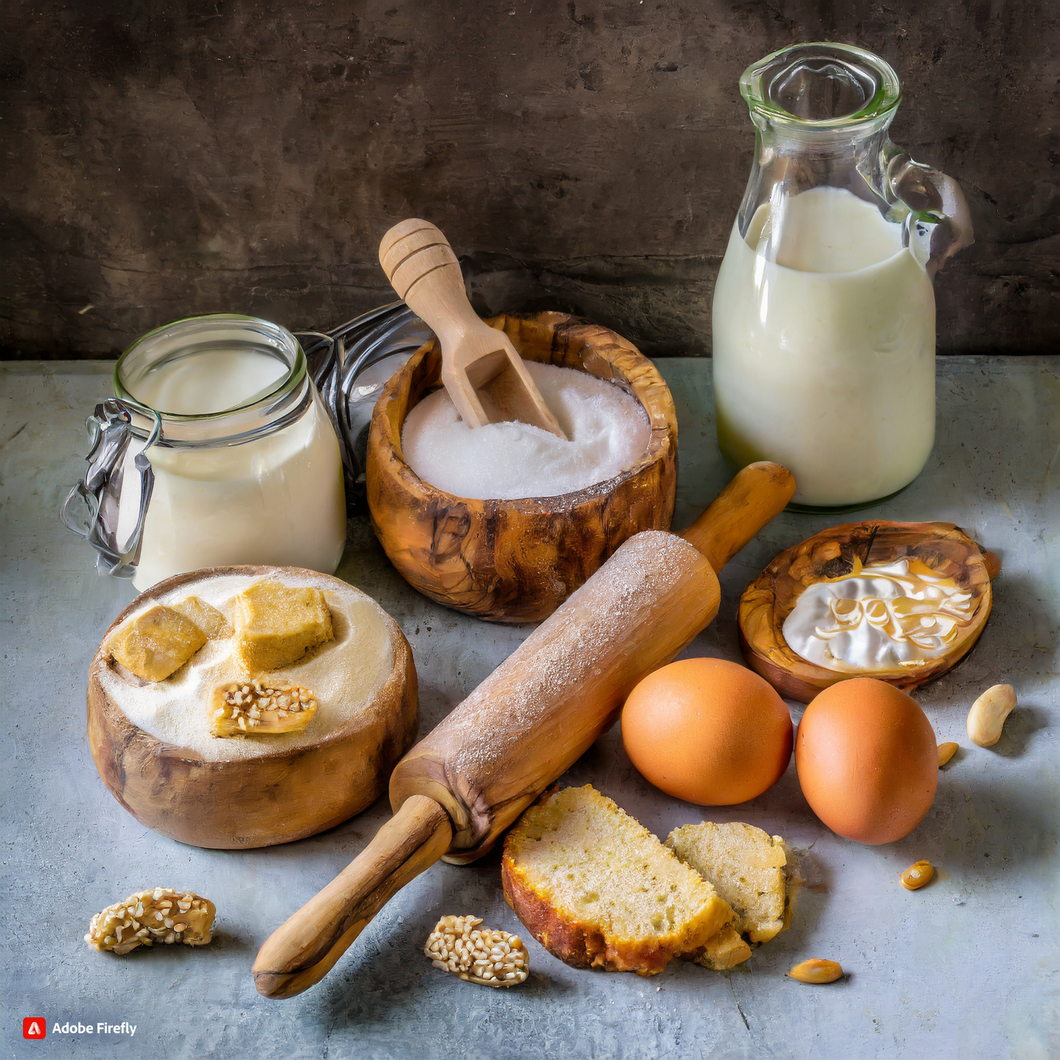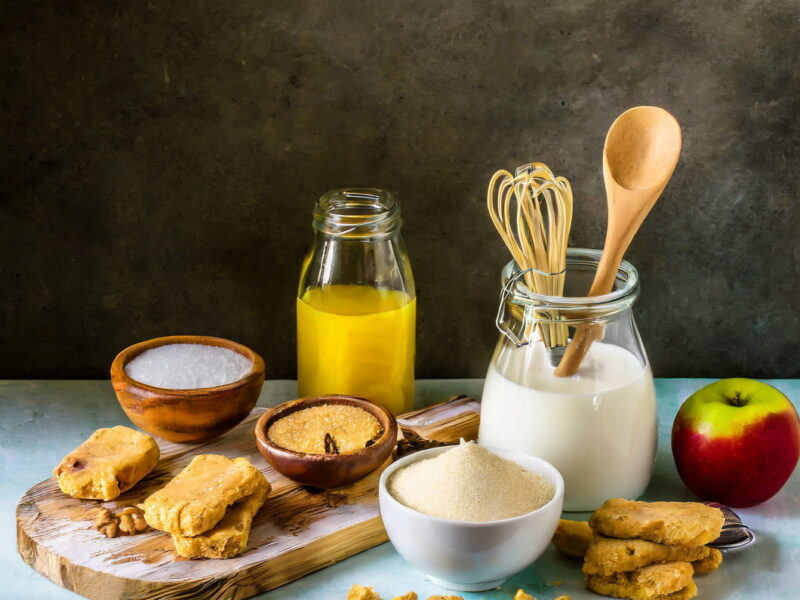Introduction
Gluten-free baking is a type of baking that excludes the use of gluten, a protein found in wheat, barley, and rye. This type of baking is often necessary for individuals with celiac disease or gluten intolerance. However, it can also be a dietary choice for those looking to reduce their gluten intake. In order to achieve successful gluten-free baking, there are a few tips to keep in mind. These include using alternative flours, adjusting the leavening agents, and ensuring proper mixing and baking techniques. By following these tips, you can create delicious and satisfying gluten-free baked goods.
5 Essential Tips for Gluten-Free Baking Success

Gluten-free baking has become increasingly popular in recent years, as more and more people are discovering that they have a sensitivity or intolerance to gluten. Gluten is a protein found in wheat, barley, and rye, and it is what gives bread and other baked goods their elasticity and structure. For those who cannot consume gluten, baking can be a daunting task. However, with the right tips and techniques, gluten-free baking can be just as delicious and satisfying as traditional baking. Here are 5 essential tips for gluten-free baking success.
1. Use the Right Flour Blend
The key to successful gluten-free baking is finding the right flour blend. Unlike traditional baking, where all-purpose flour is the go-to option, gluten-free baking requires a combination of different flours to achieve the desired texture and flavor. A good gluten-free flour blend should include a mix of flours such as rice flour, tapioca flour, and potato starch. It is also important to look for a blend that includes xanthan gum, as this helps to mimic the elasticity of gluten. Experiment with different blends until you find one that works best for your recipes.
2. Measure Accurately
In baking, precise measurements are crucial, and this is especially true for gluten-free baking. Due to the absence of gluten, the ratio of wet to dry ingredients is crucial in achieving the right texture and consistency. Invest in a good set of measuring cups and spoons and make sure to level off your dry ingredients to ensure accuracy. It is also helpful to weigh your ingredients, as this can be more accurate than measuring by volume.
3. Add Moisture and Structure
One of the biggest challenges in gluten-free baking is achieving the right moisture and structure in your baked goods. Gluten provides both of these elements in traditional baking, so it is important to find substitutes in gluten-free baking. Adding ingredients such as applesauce, mashed bananas, or yogurt can add moisture to your baked goods. For structure, try adding a little extra xanthan gum or using ingredients like ground flaxseed or chia seeds.
4. Don’t Overmix
When it comes to gluten-free baking, less is more. Overmixing your batter can result in a dense and gummy texture. Mix your ingredients until just combined, and avoid using a mixer if possible. Instead, opt for a wooden spoon or spatula to gently fold in your ingredients. This will help to prevent overmixing and result in a lighter and fluffier texture.
5. Let it Rest
Gluten-free baked goods often benefit from a resting period before baking. This allows the flours to fully absorb the moisture and helps to develop the flavors. For best results, let your batter or dough rest for at least 30 minutes before baking. This is especially important for recipes that use alternative flours such as almond or coconut flour.
In conclusion, gluten-free baking may seem intimidating at first, but with the right tips and techniques, it can be just as delicious and satisfying as traditional baking. Remember to use the right flour blend, measure accurately, add moisture and structure, avoid overmixing, and let your batter rest before baking. With these essential tips, you’ll be on your way to gluten-free baking success in no time. Happy baking!
The Top Gluten-Free Flours for Baking and How to Use Them
Gluten-free baking has become increasingly popular in recent years, as more and more people are discovering that they have a sensitivity or intolerance to gluten. This protein, found in wheat, barley, and rye, can cause digestive issues and discomfort for those who are sensitive to it. As a result, many people are turning to gluten-free alternatives for their baking needs. But what exactly is gluten-free baking, and how can you ensure success when using gluten-free flours? In this article, we will explore the top gluten-free flours for baking and provide some tips for using them in your recipes.

First, let’s define what gluten-free baking means. Simply put, it is the process of baking without using any ingredients that contain gluten. This means avoiding traditional flours such as wheat, barley, and rye, and instead using alternative flours that are free from gluten. These flours are typically made from grains, nuts, or legumes that do not contain gluten, making them safe for those with gluten sensitivities.
Now that we understand the basics of gluten-free baking, let’s dive into the top gluten-free flours and how to use them in your baking. The first flour on our list is almond flour. Made from ground almonds, this flour is a popular choice for gluten-free baking due to its mild, nutty flavor and high protein content. It is also a great source of healthy fats and can add moisture to baked goods. Almond flour is best used in recipes that call for a dense and moist texture, such as brownies or muffins.
Next up is coconut flour, which is made from dried and ground coconut meat. This flour is high in fiber and low in carbohydrates, making it a great option for those following a low-carb or keto diet. It has a slightly sweet taste and can add a subtle coconut flavor to your baked goods. However, it is important to note that coconut flour absorbs a lot of liquid, so it is best to use it in combination with other flours or to adjust the liquid measurements in your recipe.
Another popular gluten-free flour is tapioca flour, also known as tapioca starch. This flour is made from the starchy root of the cassava plant and is often used as a thickening agent in recipes. It has a neutral flavor and a fine texture, making it a great option for adding structure to gluten-free baked goods. Tapioca flour is best used in combination with other flours, as it can be too dense and gummy on its own.
Moving on to a grain-based flour, we have brown rice flour. This flour is made from finely ground brown rice and has a slightly nutty flavor. It is a versatile flour that can be used in a variety of recipes, from bread to cookies to pancakes. Brown rice flour is also a good source of fiber and can add a nice texture to your baked goods.
Last but not least, we have oat flour. Made from ground oats, this flour is a great option for those who are looking for a gluten-free alternative to traditional wheat flour. It has a mild flavor and a soft texture, making it a great option for cakes, cookies, and muffins. Oat flour is also high in fiber and can add a nice chewiness to your baked goods.
Now that we have covered the top gluten-free flours, let’s discuss some tips for using them in your baking. First and foremost, it is important to note that gluten-free flours do not behave the same way as traditional wheat flour. They do not contain gluten, which is responsible for giving baked goods their structure and elasticity. As a result, it is important to use a combination of gluten-free flours in your recipes to achieve the desired texture and structure.
Additionally, it is important to measure your gluten-free flours accurately. Unlike traditional wheat flour, which can be packed into a measuring cup, gluten-free flours should be spooned into the measuring cup and leveled off. This will ensure that you are using the correct amount of flour and will prevent your baked goods from turning out too dense or dry.
In conclusion, gluten-free baking is a great option for those with gluten sensitivities or those looking to reduce their gluten intake. By using a combination of gluten-free flours and following some simple tips, you can achieve delicious and successful results in your baking. So go ahead and experiment with these top gluten-free flours in your favorite recipes, and enjoy the delicious and healthy treats that you can create. Happy baking!
Avoiding Common Mistakes in Gluten-Free Baking: Expert Advice
Gluten-free baking has become increasingly popular in recent years, as more and more people are diagnosed with celiac disease or choose to follow a gluten-free diet for health reasons. However, baking without gluten can be a daunting task for those who are used to traditional baking methods. The absence of gluten, a protein found in wheat, barley, and rye, can make it challenging to achieve the same texture and taste in gluten-free baked goods. But fear not, with the right tips and techniques, you can become a pro at gluten-free baking and create delicious treats that everyone can enjoy.

The first step to successful gluten-free baking is understanding the ingredients. When baking without gluten, you need to use alternative flours and starches that mimic the properties of gluten. Some common gluten-free flours include rice flour, almond flour, coconut flour, and tapioca flour. These flours have different textures and absorb liquids differently, so it’s essential to follow a recipe that specifies the type and amount of flour to use. It’s also crucial to use a blend of flours to achieve the best results. A combination of flours will provide a balance of flavor and texture, making your baked goods more enjoyable.
Another essential ingredient in gluten-free baking is xanthan gum. This ingredient acts as a binder and helps create a structure in baked goods that would typically be provided by gluten. Without xanthan gum, your baked goods may crumble and fall apart. It’s essential to use the right amount of xanthan gum in your recipes, as too much can result in a gummy texture, and too little can cause your baked goods to be dry and crumbly.
One of the most common mistakes in gluten-free baking is overmixing the batter. Unlike traditional baking, where gluten helps create a structure, overmixing in gluten-free baking can result in a dense and tough texture. It’s best to mix the batter until all the ingredients are just combined, and there are no visible lumps. This will ensure that your baked goods have a light and airy texture.
Another tip for successful gluten-free baking is to add moisture to your recipes. Gluten-free flours tend to absorb more liquid than traditional flours, so it’s essential to add extra moisture to your batter. This can be achieved by adding an extra egg, using applesauce or mashed bananas, or adding a little more liquid, such as milk or water. Adding moisture will prevent your baked goods from being dry and crumbly.
When it comes to baking with gluten-free flours, it’s crucial to be patient and let the batter rest. Gluten-free flours need time to absorb the liquid and develop their flavors. Letting the batter rest for 10-15 minutes before baking will result in a better texture and taste. This is especially important when using coconut flour, which is highly absorbent and needs more time to rest. Read Dinner recipes for Weight Loss.
Lastly, it’s essential to have the right tools for gluten-free baking. Using a non-stick pan or lining your baking pan with parchment paper can prevent your baked goods from sticking. It’s also helpful to use an oven thermometer to ensure that your oven is at the correct temperature. Gluten-free baked goods can be more sensitive to temperature changes, so it’s crucial to have an accurate reading.
In conclusion, gluten-free baking may seem intimidating at first, but with the right tips and techniques, you can achieve delicious and successful results. Understanding the ingredients, avoiding overmixing, adding moisture, and being patient are key to successful gluten-free baking. With a little practice and experimentation, you’ll be able to create tasty treats that everyone can enjoy, regardless of dietary restrictions. So don’t be afraid to try new recipes and have fun with gluten-free baking!
Q&A – Gluten-Free Baking Tips
Q: What is gluten-free baking?
A: Gluten-free baking is the process of making baked goods without using any ingredients that contain gluten, such as wheat, barley, and rye. This is often done to accommodate individuals with celiac disease or gluten intolerance.
Q: What are some tips for success in gluten-free baking?
A: Some tips for success in gluten-free baking include using a blend of gluten-free flours, adding xanthan gum or guar gum to help with texture and binding, and ensuring all ingredients and equipment are free from cross-contamination with gluten.
Q: Can I use regular baking recipes for gluten-free baking?
A: It is not recommended to use regular baking recipes for gluten-free baking as the ingredients and ratios will need to be adjusted to compensate for the lack of gluten. It is best to use recipes specifically designed for gluten-free baking.
Conclusion for Gluten-Free Baking Tips
In conclusion, gluten-free baking is a type of baking that eliminates the use of gluten, a protein found in wheat, barley, and rye. This type of baking is suitable for individuals with celiac disease or gluten intolerance. To successfully bake gluten-free goods, it is important to use alternative flours, such as almond or coconut flour, and to carefully read ingredient labels. Additionally, using xanthan gum or guar gum can help improve the texture and structure of gluten-free baked goods. With proper techniques and ingredients, gluten-free baking can result in delicious and satisfying treats for those with dietary restrictions.
Please follow us on linkedin. You can learn all best canadian food recipes you can check our Culinary 1TouchFood Youtube and Telegram 1TouchFood page. Don’t forget Fighting Obesity Magazine and Radio Cooking.

